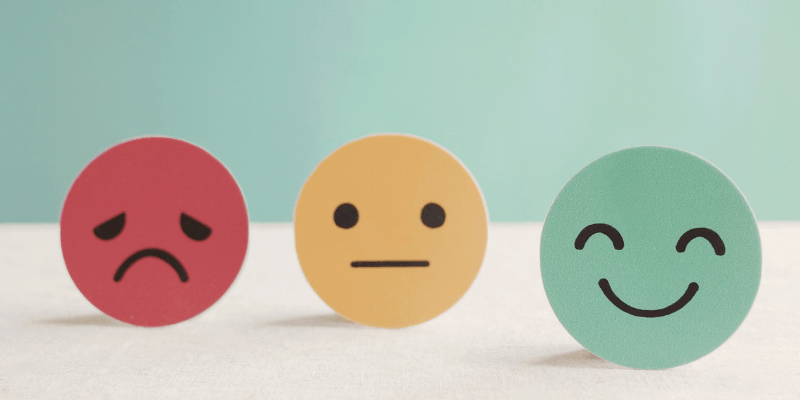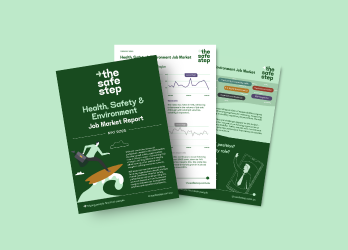Creating Well Workplaces
Page Published Date:
August 2, 2022
Mental health concerns come at a high cost. Spikes in absenteeism, presentism and psychosocial workers compensation claims are the tip of the iceberg. Poor mood and mental injuries also contribute to resignations and limit people’s productivity and creativity at work.
In this blog we discuss the increasing importance of wellbeing at work and look at ways to make a difference when it comes to mental health in the workplace. Read on to learn more.

Poor mental health comes at a high price
Alongside the high personal costs of mental health, a recent Productivity Commission report estimates that mental illness costs the Australian economy between $200 billion and $220 billion a year, with workplaces causing up to $17.4 billion dollars of that cost. Poor mental health can prevent people from joining the labour market, finding and keeping a job, attending work, and performing to the best of their abilities.
Employers can help support, retain and attract workers by creating ‘well’ workplaces with strong cultures. Recent Mental Health at Work research highlighted that only half of Australian employees say their culture makes them want to stay in their current role, posing a considerable risk for employers. “With record low unemployment, people have no reason to remain in a toxic environment,” says Jo Skipper. Measurable wellbeing initiatives are important for retaining and attracting staff.
Reducing stigma in the workplace
In a recent Mental Health at Work Moodometer survey only 55% of people felt comfortable speaking to their manager about a mental health challenge, revealing the strong stigma that remains in many Australian workplaces.
To reduce stigma, mental health expert Graham Cowan recommends using a ‘traffic light’ system to discuss mood at work. Rather than asking “Are you anxious or depressed?”, take away some of the heat by asking “Are you in the red, amber or green zone.” Adjusting the language can help open new avenues of conversation.
Sharing lived experiences is another way to help people feel they will be understood and supported in the workplace. Leaders who reveal their own vulnerabilities can create an environment of trust. “You don’t have to have all the answers,” explains Graeme Cowan. “Being vulnerable and admitting your own struggles helps open the door for others in the organisation.”
Speaking to a mentor or mindset coach, may help senior leaders to recover from knockbacks themselves, to be open about vulnerabilities and lead with empathy
10 tips for creating a WELL workplace:
- Promote fairness, flexibility, clarity and balance.
- Encourage and support people to be their authentic selves at work
- Steer clear of double standards and contradictory behavior e.g. don’t say ‘look after yourself’ then increase workload.
- Allow room for uncertainty, fear or sadness. Authentic feelings get smothered in an environment where only positive vibes will do. Toxic positivity stops people from expressing low mood. Non-judgmental listening is key to helping supporting people with low mood. Help by encouraging them to take action and by providing practical support.
- Develop an integrated, evidence-based wellbeing strategy with measurable objectives and a tangible return on investment. Engage a specialist if you don’t have the right skills in-house.
- Ask: Do we feel connected? Do we have each other's back? And do we share a future? According to Graeme Cowan these 3 elements are key for psychologically safe teams.
- Provide support services for all levels of the business including managers and staff e.g. mental health first-aid training and EAP services. Promote these and make them accessible.
- Don’t be a ‘wet noodle manager’ who flips and flops, making popular decisions rather than the right decisions.
- Combat corporate numbness. Jargon and buzz words create apathy and are ‘mood killers’.
- Provide opportunities for teams to connect/reconnect, especially in remote or hybrid work environments.
Psychosocial hazards
Despite a growing awareness of psychological hazards, mental injury claims have grown significantly in recent years. In VIC, for example, mental injury claims are expected to account for a third of all workers’ compensation claims by 2030.
The OHS Act requires employers to provide a safe work environment, which includes managing hazards and risks associated with both physical and psychological health.
Work Safe Victoria defines psychosocial hazards as factors in the design or management of work that increase the risk of work-related stress and can lead to psychological or physical harm. Examples of psychosocial hazards might include poor supervisor support, low job control, bullying, sexual harassment, or high job demands such as long hours and high workloads.
In 2022 new regulations are being introduced in VIC to better protect workers from mental injury, helping to elevate the issue. Other states and territories are expected to follow suit.
How to reduce burnout
Record-low unemployment and the current skills shortages are adding to the potential for stress and burnout. The Mental Health at Work survey, Australian workers reported feeling ‘meh’ and 25% of people felt their stress at work wasn’t manageable.
Gary Martin says that burnout is about people being overloaded and exhausted by work. He believes the onus is on business to relive stress in the workplace and there’s more that can be done beyond simply recommending a few days off or advocating for worker ‘self-care’. “A few days away to recharge might help, but the reality is only your boss keeps your burnout.”
Relieve stress and avoid burnout
- Avoid overloading people with too much work
- Allocate workloads across a team in equitable way.
- Make priorities clear.
- Match projects/tasks with an individual’s knowledge and expertise.
- Avoid micro-managing people – this creates a lack of autonomy.
Having support networks and resources readily available is also important for a supportive workplace culture. As a first point of call Graeme Cowan recommends referring to eMHprac’s evidence-based digital mental health tools which include videos, fact-sheets and online training.
How can we help?
Do you need professional help developing or implementing a wellbeing strategy in your workplace? We can recruit Wellbeing professionals a permanant or temporary basis.
Or, if you yourself are feeling burnout or working in a toxic culture then it may be time to make a move elsewhere. We have a range of health, safety and wellbeing job opportunities available including a number that are not advertised on the open job market. Please get in contact with our team to discuss the next step in your career.




